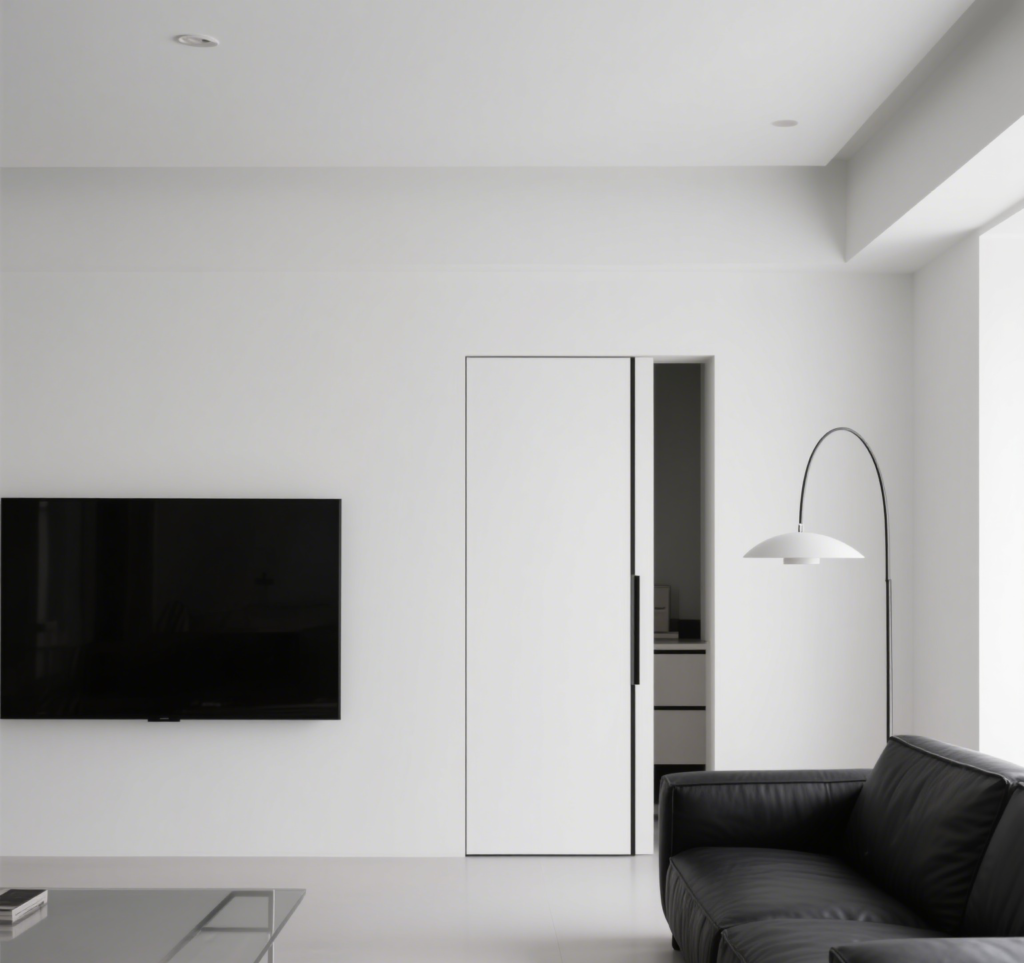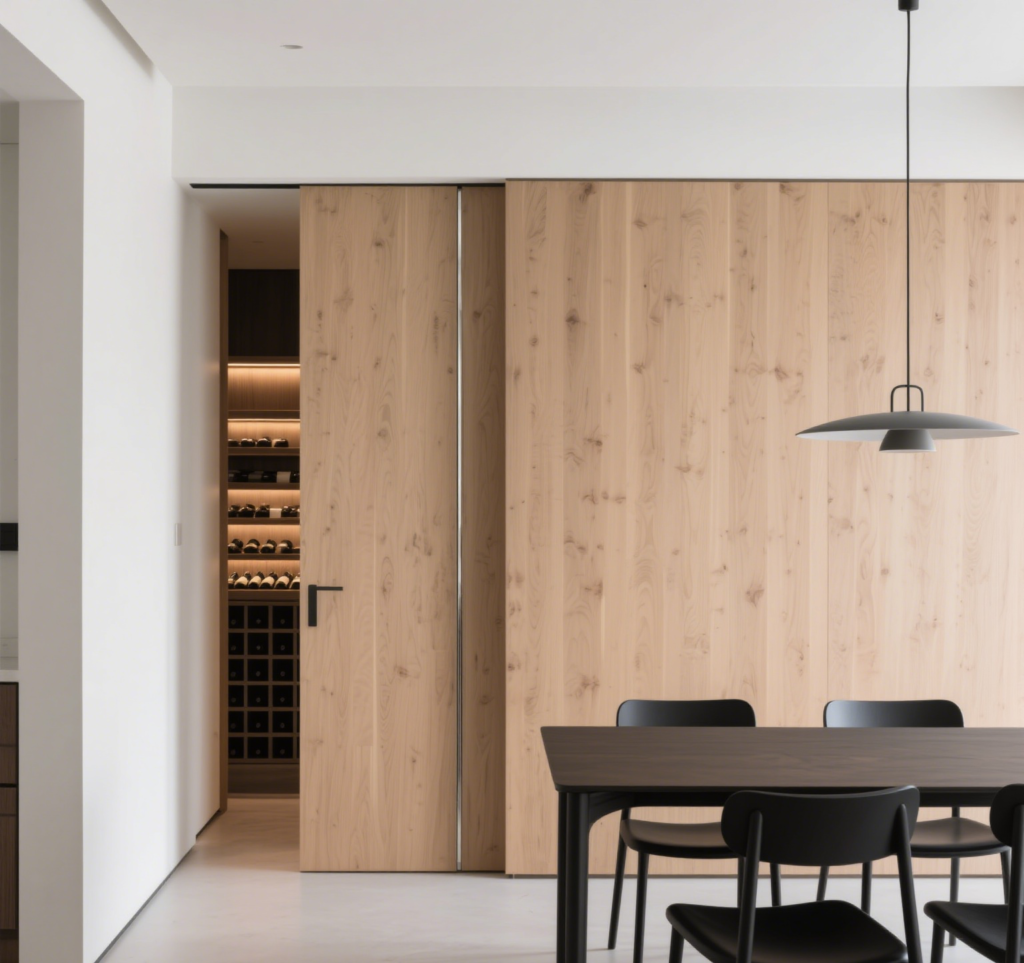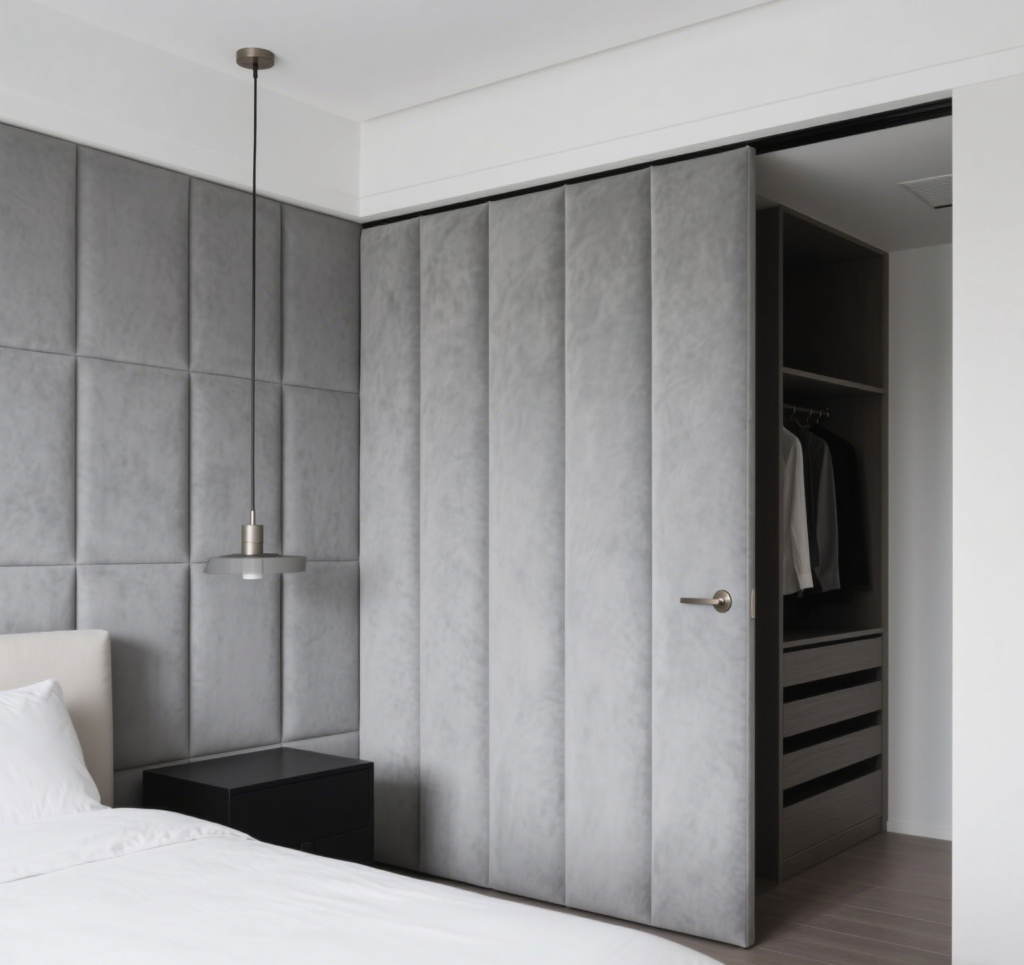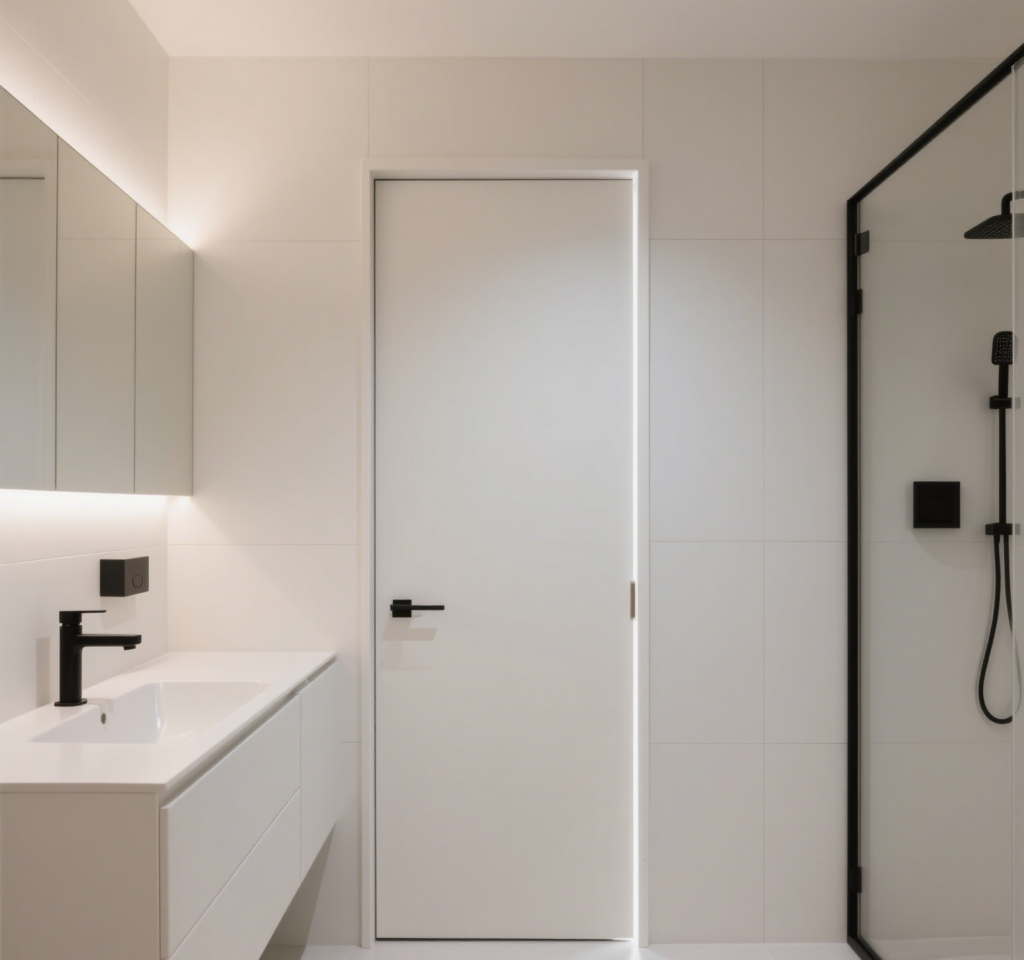Invisible doors—also known as hidden or flush doors—offer a sleek, minimalist solution for separating spaces without compromising aesthetics. Designed to blend seamlessly with the wall, these doors elevate interior design while enhancing privacy and functionality.
When and Why Use Invisible Doors?
1. Enhance Privacy in Homes
Invisible doors are ideal for dividing public and private areas such as studies, bedrooms, or personal lounges. They ensure boundaries while maintaining style.
2. Fix Floor Plan Flaws
When bathrooms or storage spaces face entrance or bedroom doors—a common flaw in many apartment layouts—an invisible door can help restore harmony and visual balance.
3. Maintain Wall Continuity
For those who value clean lines and uninterrupted wall surfaces, invisible doors allow for a flawless wall appearance. With matching paint, wallpaper, or decorative panels, they are nearly indistinguishable.
Where to Apply Invisible Doors?

✅ Living Room
An invisible door in the living room can hide utility rooms or secondary spaces. Using wood panels or molding ensures the door matches wall finishes for a polished look.

✅ Dining Room
In dining areas, hidden doors offer functional zoning while preserving elegance. Designs may include push-pull or folding mechanisms with artistic finishes for added character.

✅ Bedroom
Invisible doors in bedrooms promote serenity. Paint-matching and flush surfaces make them blend naturally into the wall, reinforcing a quiet and restful atmosphere.

✅ Bathroom
Bathrooms facing high-traffic areas can cause Feng Shui concerns. A hidden bathroom door resolves awkward alignments while enhancing privacy and avoiding visual clutter.

✅ Storage & Cabinets
Cabinet-style invisible doors cleverly disguise entryways behind shelves or bookcases, maximizing space while keeping design cohesion.
